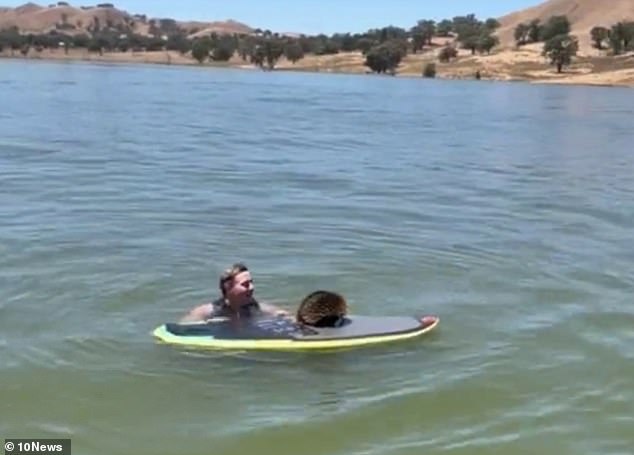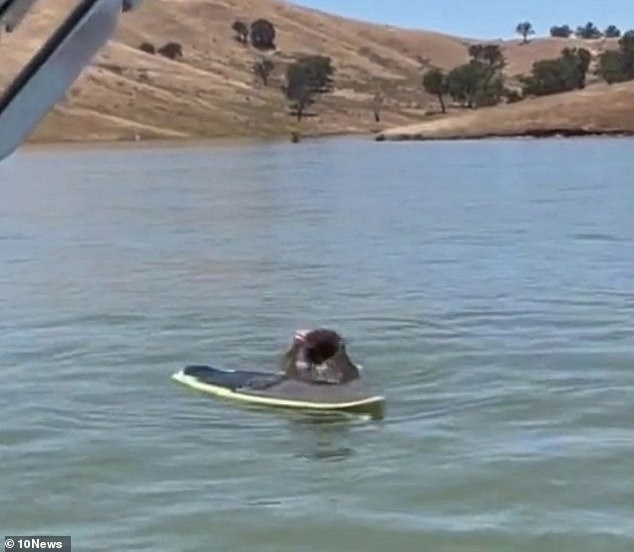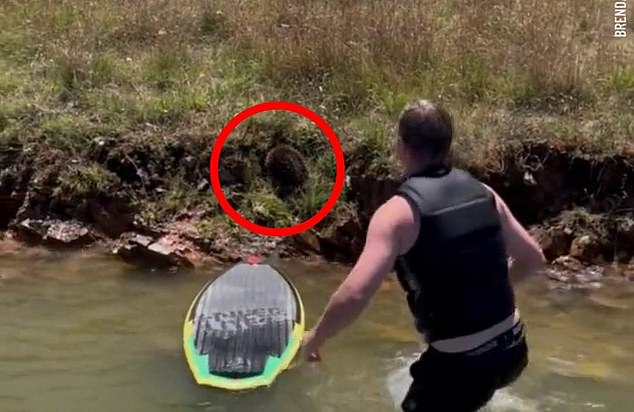An echidna is rescued after floating in a lake 70metres from the shore at Bonnie Doon near Melbourne
>
Watch the moment an exhausted echidna is rescued after a wakeboarder found him floating in a lake 70 meters from shore
- An exhausted echidna was rescued from a Melbourne lake
- The mammal was 70 meters off the coast of Bonnie Doon.
- Brendan Paterson saved him by placing him on his wakeboard
An echidna has been rescued after it was found struggling to stay afloat in the middle of a lake 70 meters from the shore.
Wakeboarder Brendan Paterson found the exhausted mammal while the surfer was with his family at Lake Eildon in Bonnie Doon, northeast of Melbourne.
The sight of Mr. Paterson pulling the spiny anteater out of the water and placing it on his board was posted on social media Tuesday.
Wakeboarder Brendan Paterson found the exhausted echidna (pictured) while the surfer was with his family at Lake Eildon in Bonnie Doon, northeast of Melbourne.
It showed the echidna sitting on the dashboard after Paterson jumped into the water, as his family watched from a nearby boat.
The rescuer then guided his board with the animal toward shore, and the tired-looking mammal scrambled back onto dry land.
Paterson said 3AW when he first saw it he thought it was a different animal.
“I saw what I thought was a tortoise struggling upside down, but when I got closer I realized it was an echidna,” Paterson said Tuesday.

The rescuer then guided his board with the animal onto dry land (pictured)

The sight of Mr. Paterson pulling the spiny anteater out of the water and placing it on his board was posted on social media Tuesday (pictured).

The rescuer then guided his board with the animal toward shore, where the tired-looking mammal scrambled back onto dry land.
‘He took a big breath [after it got onto the board]. We sailed a bit and I made sure he got some rest.
We were a good 70 meters on each side [of the shore]- He had probably gone a little further than necessary… it was an echidna that couldn’t swim, it was definitely struggling.’
Echidnas can paddle across small distances like streams and dams, but it’s unusual to see them in the middle of a large lake, he said.
A social media commenter joked about the echidna’s journey.
‘I hope it didn’t take you back to the same side you started from! Great job!’
A similar rescue was carried out and posted on social media this month when a Queensland woman pulled an echidna out of her pool after finding it tottering.
The distinctive Australian creature crossed the pool fence and fell into the water on Shan Croc’s property in the rural town of Muckadilla.

Echidnas (pictured) can swim across small distances such as streams and dams, but it’s unusual to see them in the middle of a large lake, Paterson said.
